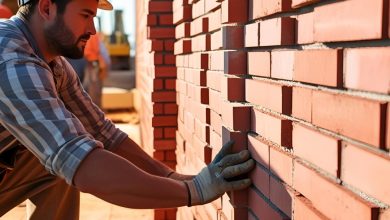The Timeless Elegance of Kashmiri Silk Carpets: A Guide to Luxury and Craftsmanship

Kashmiri silk carpets have become known all over the world for their stunning design, exquisite beauty and unmatched workmanship. They are woven by skilled craftsmen. These carpets aren’t just decorative objects; they are art pieces which reflect a rich culture heritage. This blog will explore the creation of these luxurious carpets, look into their history and give tips about how you can best integrate them into your design.
1. The History of Kashmiri Silk Carpets
a. Origins and Influence
Kashmiri silk carpets are a part of a tradition that goes back many centuries. The art of weaving carpets in Kashmir was first introduced by Persian artisans under the Sultan Zain-ul-Abidin during 15th century. This Persian elements are apparent in the exquisite geometric and floral patterns that define Kashmiri carpets of today. Through the years the art of weaving has developed by blending Persian, Mughal, and local Kashmiri styles to create a distinctive style.
b. The Evolution of the Craft
The carpets at first were made of wool however, as the craft evolved and silk was the preferred material of choice due to its glossy finish and capability to create intricate details. The silk that is used to make Kashmiri carpets is of top quality, typically sourced locally from Mulberry trees that grow in the region. Silk did not just enhance the look of the carpets, but also added value to them which made them highly sought-after expensive products.
2. The Making of Kashmiri Silk Carpets
a. Material Selection
The process of making the Kashmiri silk carpet starts by selecting the right ingredients. The main ingredient comprises the pure Mulberry silk, which is known for its toughness, smooth texture as well as its natural shine. Silk is spun into fine threads, which are then dyed with natural dyes, which are typically derived from minerals, plants, as well as insects. The dyes give carpets their vivid but subtle colors that will not fade over time.
b. Design Creation
Design is an important aspect that is essential to Kashmiri carpets made of silk. Traditional designs typically include intricate floral patterns, paisleys or medallions, however modern designs can also incorporate contemporary designs. The concept is sketched out on graph paper by Naqash (designer) who carefully sketches every aspect, making sure that the design can be translated easily onto the carpet.
c. Weaving Process
The process of weaving is labor-intensive and may take a few days or months according to the complexity and size of the rug. The weaving process is carried out on a loom, and the silk threads are tied around the warp as well as the weft. Every knot is tied with a hand with knot density being the most important factor making the distinction between the high quality and low-quality carpet. A knot with a higher density indicates an exquisite, detailed design, and also a stronger carpet.
d. Knot Density and Quality
Kashmiri silk carpets usually hand-knotted, with density ranging between 200 and 800 knots for each square inch. More knots allow for more intricate and detailed designs. These carpets are typically classified into various types based on knot densities with the highest quality carpets are the most useful.
e. Washing and Finishing
Once the carpet has been made, it goes through cleaning to eliminate any dirt and enhance the color. It is then stretched out and cut to ensure it is uniform. The carpet is then put through a final touch that may involve additional polishing to reveal the natural shine of the silk.
3. The Timeless Appeal of Kashmiri Silk Carpets
a. Luxurious Aesthetic
Kashmiri silk carpets are famous for their lavish appearance. The natural shine of silk creates a beautiful and lustrous look that can make any room look more elegant. The intricate patterns and vivid colors add a touch class and elegance and make these carpets a central feature in any space.
b. Durability and Longevity
Despite their delicate appearance Kashmiri silk carpets can be tough. The top-quality silk and the meticulous workmanship make sure that these carpets stand up to the wear and tear of time, frequently lasting for a long time if maintained. They are durable, which makes them an excellent investment.
c. Cultural Significance
A Kashmiri silk carpet isn’t solely about style and luxury. It’s an opportunity to own a part the past and the cultural heritage. The carpets are a tribute to the long-standing art of hand-craftsmanship in Kashmir and reflects the artistic legacy of the region.
4. Best Placement for Kashmiri Silk Carpets
a. Living Room
A living space is among the most ideal locations to showcase the beauty of a Kashmiri silk rug. By placing the carpet in the middle or the area, beneath the coffee table, will be the centerpiece for your space. Select a carpet size that is compatible perfectly with the layout of your furniture while allowing some inches of carpet to extend over the edges of your furniture to give it a balanced look.
b. Dining Room
Kashmiri silk carpets can be utilized in dining areas, but it is important to shield them from stains and spills. The carpet should be placed under the dining table, making sure that it’s large enough to hold tables and chairs when they’re removed. A glass-topped table for dining can be a great option to display the carpet’s exquisite design.
c. Bedroom
In the bedroom in the bedroom, carpets in the bedroom Kashmiri silk carpet could add luxurious and warmth to your bedroom. Set it near the end of the bed or choose a bigger carpet that is extending under the bed and over the sides. This design does not just adds to the visual appeal, but also offers an extremely soft and luxurious carpet to walk on as you get out of the bed.
d. Hallways and Entrances
Although it might seem odd however, even a Kashmiri silk floor can be an impressive display in the hallway or at the entrance. A runner-style carpet that has intricate designs can bring elegance to these spaces that are often overlooked. Be sure the carpet is firmly to avoid slipping.
e. Wall Hangings
Because of their artistic value, Kashmiri silk carpets can also be used to create wall hangings. This is a fantastic method to showcase the carpet in a smaller size or keep a delicate piece. Carpets that are mounted on walls can provide an elegant, unique look to any room, working as both decor and art.
5. Caring for Your Kashmiri Silk Carpet
a. Regular Cleaning
To keep the beauty of the appearance of Kashmiri silk rug, frequent cleaning is necessary. Clean the carpet frequently to get rid of dust and other debris however, do not use the vacuum with beater bars, since it could damage silk’s delicate fibers. To do more thorough cleaning, it’s recommended to hire an expert carpet cleaner that specializes with silk carpets.
b. Protection from Sunlight
The direct sunlight could cause the hues of the Kashmiri silk rug to fade with time. To ensure the carpet is protected you should place it in a location that isn’t exposed to direct sunlight or put up blinds or curtains to block the sunlight. A rotation of the carpet every couple of months will also make sure that the carpet is exposed evenly to light.
c. Handling Spills and Stains
Spills must be dealt with promptly to avoid staining. Blot the spill lightly with a white, clean cloth. Never rub as this could cause the stain to spread and harm the fibers. For more difficult stains professionals are recommended for cleaning.
d. Storing the Carpet
If you are looking to keep it, store your Kashmiri silk rug, simply roll the carpet (never fold it) with the pile facing outward. Cover the carpet with cotton sheets or acid-free paper to shield it from moisture and dust. Place your carpet in a dry and cool area far from the direct sun as well as extreme temperature.
6. Investing in Kashmiri Silk Carpets
a. Understanding Value
The worth of the value of a Kashmiri silk carpet can be determined by various factors, including the grade that the fabric is made of, its amount of knots, intricateness of the design and the dimensions that the rug. Rare or antique designs can be more expensive in addition to carpets made from particular times or regions that are known for their high-end craftsmanship.
b. Authenticity
If you are buying the Kashmiri silk rug, it is essential to verify the authenticity of the carpet. The authentic Kashmiri carpets are hand-woven and each is distinctive. Beware of imitations manufactured by machines which lack the workmanship and authenticity of authentic Kashmiri silk carpets. If you purchase from reputable dealers, or directly from the artisans in Kashmir will guarantee authenticity.
c. Ethical Considerations
As with all luxury items ethical considerations are essential. A lot of Kashmiri silk carpets have been woven by skilled artisans who depend on this art form to earn a living. If you purchase a genuine hand-woven carpet, it is supporting the artisans and helping conserve this ancient craft.
Conclusion
Kashmiri silk handmade carpets aren’t simply decorative objects they represent the highest quality, craftsmanship, as well as culture. Their timeless beauty makes them an adored item and can transform any room with their elegance and class. It can be they are used as a focal point in a living space or a luxury accent in the bedroom, or an art piece in a gallery and the Kashmiri silk floor is an investment that will add the beauty and sophistication in your living space for many generations to in the future.








